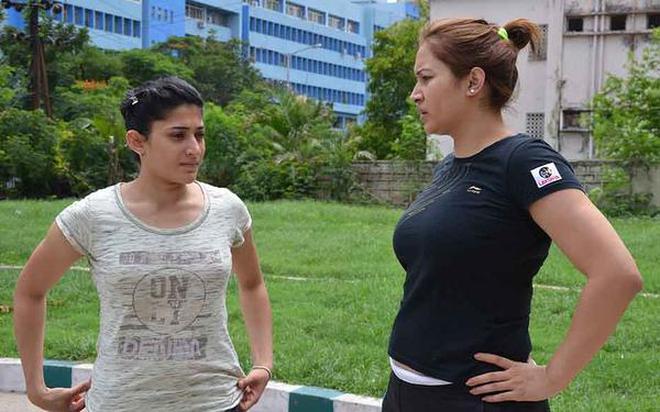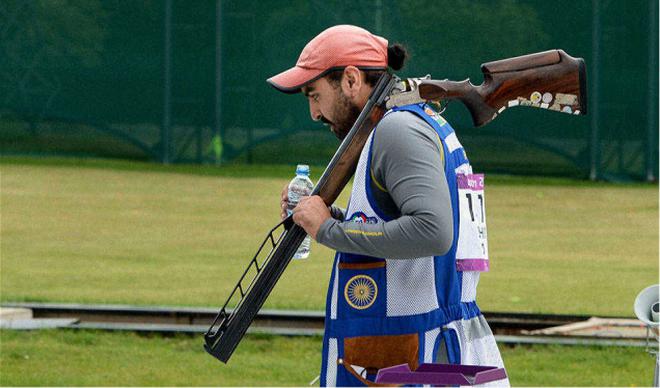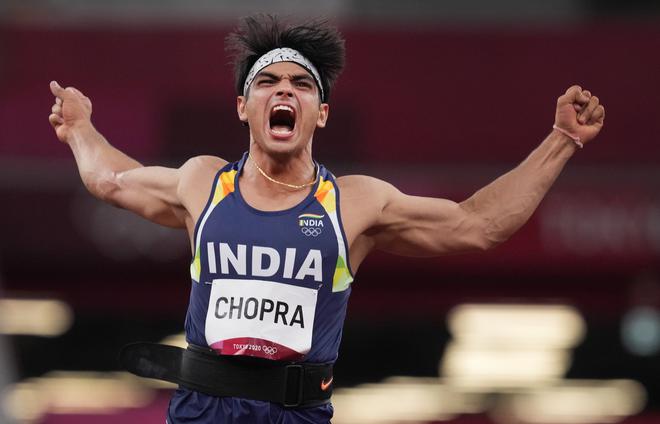The story so far: Gearing up for the Olympic Games in 2024 in Paris and 2028 in Los Angeles, the Centre on June 29 invited ace shooter Gagan Narang to join as a member of the Mission Olympic Cell (MOC) for the Target Olympic Podium Scheme (TOPS).
39-year-old Gagan Narang, who won bronze in the 2012 London Olympics, was invited to join the committee for selecting athletes to be trained under the TOPS core and development groups for the two Games. Mr. Narang, as part of the MOC, will monitor the preparedness of athletes selected under TOPS, and approve budgetary requirements.
The TOPS scheme currently supports 104 core group athletes across 13 disciplines and two hockey teams (men and women). 269 development group athletes are also being groomed at a junior level under the scheme. India’s TOPS athletes are currently participating in the World Athletics Championships in the United States, which began on July 15.
What is TOPS?
Flagged off in September 2014, the Target Olympic Podium Scheme (TOPS) was launched to improve India’s performance at the Olympics and Paralympics, thereby improving India’s medal tally in the Rio Olympics 2016. A committee called the TOPS Elite Athletes’ Identification Committee was constituted to shortlist worthy candidates and provide targeted training.
The first Committee was attended by Olympic gold-medal winning shooter Abhinav Bindra, former national cricket team captain Rahul Dravid, long jump champion Anju Bobby George, former badminton player P Gopichand and Olympic bronze-medal winning boxer Mary Kom, along with then Union Sports Minister Sarbananda Sonowal, Lok Sabha MP Anurag Thakur and sports administrators from Sports Authority of India (SAI).
This Committee formed the first Mission Olympic Cell (MOC) which was tasked with:
- Approving customised programmes for the TOPS athletes at National Centres of Excellence (NCOE)
- Recommending ‘out-of-pocket’ allowances as incentives to athletes. Currently the allowance has been fixed at Rs 50,000 per month for core athletes and Rs 25,000 for junior (development group) athletes.
- Supporting, monitoring and reviewing athletes’ progress
- Coordinating with partner agencies for equipment purchase, specialised training and other needs
- Ensuring documentation/contractual obligations of beneficiaries
- Delivering sponsorship and media contracts under TOPS
The MOC, which meets on a weekly basis, has a selection and review committee to shortlist TOPS athletes based on their performance. The scheme receives funding from the National Sports Development Fund (NSDF) and the Khelo India scheme launched in 2017.
Progress under TOPS
In 2016, India sent one of its largest delegations to the Rio Summer Olympics — 63 men and 54 women, across 15 sports— and brought home two medals. Shuttler P.V Sindhu and wrestler Sakshi Malik won the silver and bronze in badminton and wrestling respectively while several athletes like Sania Mirza, Rohan Bopanna, Abhinav Bindra, and Dipa Karmakar narrowly missed out on a medal.
Similarly, in the 2016 Paralympic Games, India sent a delegation of 19 athletes (16 men and three women) who bagged four medals. Gymnasts Mariyappan Thangavelu and Varun Singh Bhati won the gold and bronze respectively in the men’s high jump T42 event. Devendra Jhajharia won gold in the men’s javelin throw F46 event and Deepa Malik won the silver in the women’s shot put F53 event. All the above para-athletes were covered under TOPS. (T42, F46, F53 and similar designations used in this article refer to the classification system used to determine the eligibility of para-athletes for various events.)
India also tasted remarkable success in the 2018 Commonwealth Games, bringing home 66 medals (25 gold, 19 silver and 20 bronze) and finishing third in the tournament. India’s highest number of medals were in shooting (16 medals – seven gold, four silver, five bronze) followed by 12 in wrestling (five gold, three silver and four bronze) and nine in weightlifting (five gold, two silver, two bronze). Of the medallists, 47 were supported under the TOP Scheme, according to the Sports Authority of India website.
Controversies
While TOPS has provided much-needed strategising, funding and support to Indian athletes, it has not been without its share of controversies.
In 2015, five of the six women quarter-milers who were suspended for doping between mid-2011 and mid-2013 were added to the TOPS list. However, India’s top women’s doubles team in badminton - Jwala Gutta and Ashwini Ponnappa – were left off the list, leading to much criticism. Later, the duo was included along with the men’s doubles duo B Sumeeth Reddy and Manu Attri in the TOPS list ahead of the 2016 Rio Games.

Similarly, former double trap world number one Ronjan Sodhi was denied funds for training by the Union Sports Ministry in October 2015, ahead of the Rio Olympics. He said, “I was made to run from one office to the other, in an attempt to garner funds, now that they are not going to release it.” The incident happened a mere two weeks ahead of Mr. Sodhi’s last chance to book an Olympic spot in Rio.

Changes in TOPS ahead of Tokyo Olympics
A TOPS Secretariat was formed in August 2018 – comprising of a CEO and over 20 officials with sports backgrounds— to oversee the functioning of TOPS. Targeting the 2020 Olympics, SAI Director General Neelam Kapur said that Rs 100 crore had been allocated for preparations.
The secretariat took into account the performance of Indian athletes in 2016-2018 and feedback from national federations and coaches to improve India’s medal tally. The body also roped in corporate houses to provide better funding and implemented the Come and Play Scheme to encourage local sportspersons in areas where SAI sports centres were operational.
With the onset of COVID-19 in 2020, the Summer Olympics scheduled to be held in Tokyo were pushed to 2021. In preparation, SAI established 23 National Centres of Excellence (NCOEs) and 67 SAI Training Centres (STC) across India to implement various sports promotional schemes. With 189 such functional centres, SAI was training 9025 athletes (5579 boys and 3446 girls) as of July 2021.
Moreover, prior to the lockdown in March 2020, the MOC shortlisted 258 athletes across 12 sports for the TOPS development group i.e. young athletes to be groomed for future Olympic Games. The highest number of athletes were shortlisted for shooting (70), followed by boxing (36), archery (34), badminton (27), wrestling (18), weightlifting (16), swimming (14), judo (11), table tennis (7), rowing (5) and cycling (4).
India’s performance in 2021 Olympics & Paralympics
Recording its best-ever performance at the Games, India won seven medals — Ravi Kumar Dahiya, Bajrang Punia, Lovlina Borgohain, Neeraj Chopra, Mirabai Chanu, PV Sindhu, and the Indian hockey team.
23-year-old Neeraj Chopra bagged India’s first Olympic gold in athletics with his 87.58m hurl at the men’s javelin throw event, while ace shuttler P.V. Sindhu created history by winning the bronze in the badminton event and becoming the first Indian woman to win two individual Olympic medals. The Indian men’s hockey team won the bronze medal, ending the nation’s 41-year Olympic medal drought in hockey. The women’s hockey team narrowly missed the podium but finished fourth beating Olympic champions Australia in the quarter-finals.

India’s sporting success was further bolstered when, mere weeks later, the Paralympics team bagged 19 medals at the Tokyo Paralympic Games – India’s highest tally in a single edition and higher than the cumulative total of all medals won till then.
19-year-old Avani Lekhara became the first Indian woman to win Paralympics gold, which she followed up by winning the bronze in the women’s 10m air rifle and 50m rifle (SH1) respectively. Apart from Ms. Lekhara, the other gold medallists were Sumit Antil (men’s javelin throw F64), Manish Narwal (mixed 50m pistol SH1), Pramod Bhagat (men’s singles badminton SL3), and Krishna Nagar (men’s singles badminton SH6). Indian para-athletes also won eight silver medals and six bronze medals, earning India the 24 th spot — its best ever in the Games.







